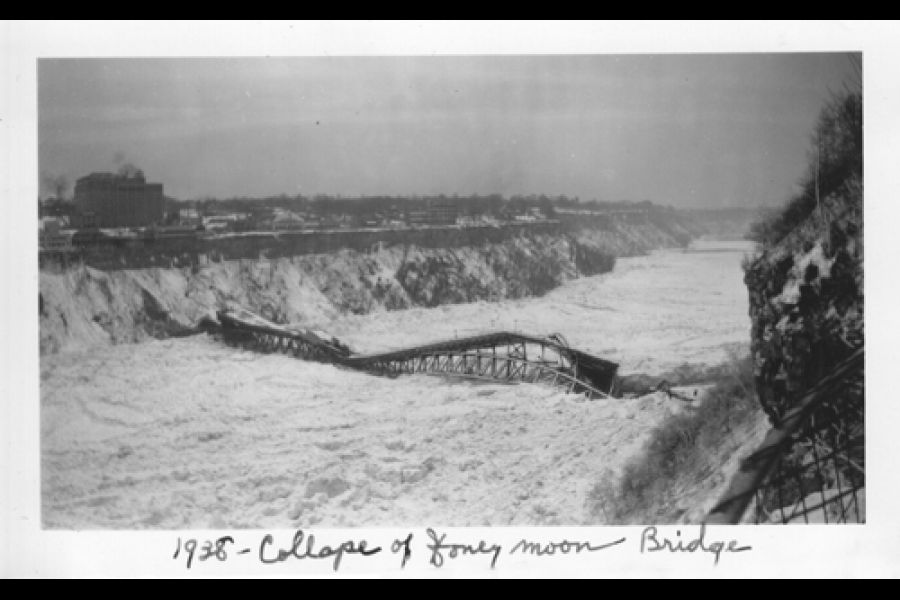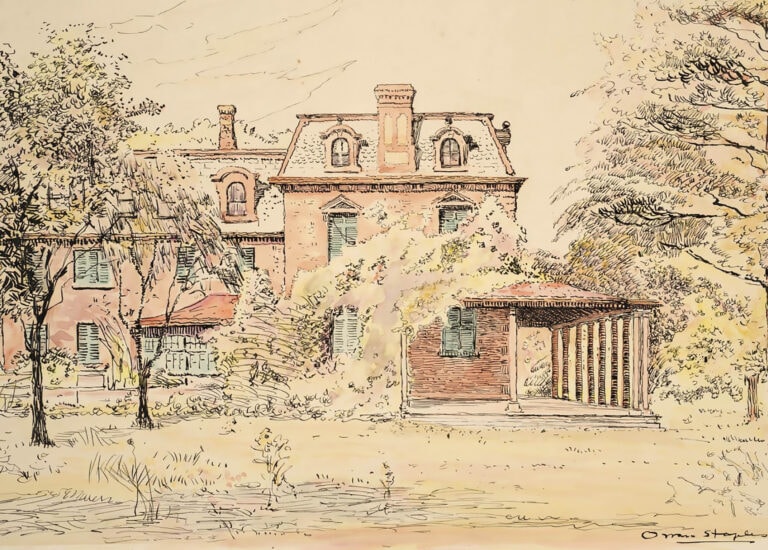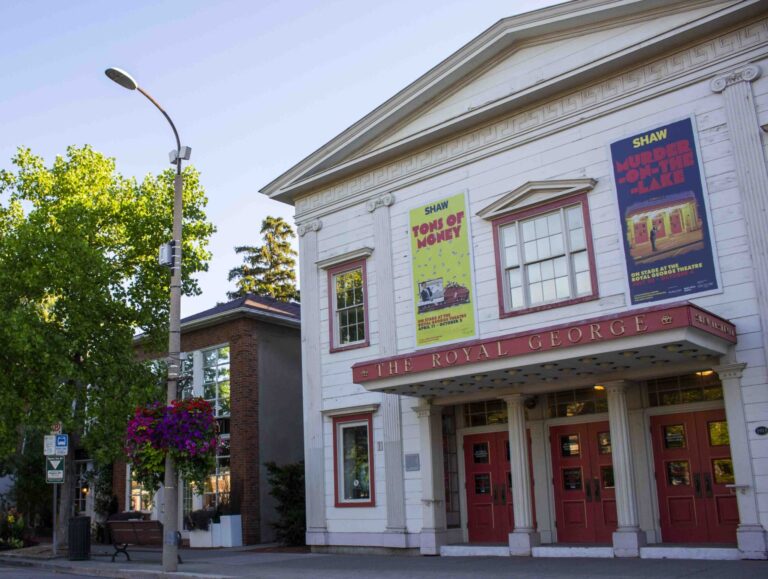The temperatures have dropped to below seasonal, the winds are blowing and the snow is falling. With the arctic blasts of icy air and a polar vortex descending, the familiar chill in our bones announces, “winter has arrived.”
Niagara Falls (Horseshoe Falls) and the Niagara River never freeze over. Lake Erie does which has caused some major ice jams that have been noted through a century and a half of recording weather conditions in this region.
The first recorded ice jam was on March 29, 1848.
South/west winds blowing across Lake Erie pushed thousands of tons of ice flows into the mouth of the Niagara River creating an ice dam. For the next three days, Niagara Falls slowed to a trickle.
Locals awakened on the 29th of March to a deafening silence, no longer hearing the roar of the water falls. The residents of many towns, on both sides of the river, thought it was the beginning of the end. On March 30th special church services were held to pray for deliverance of this horrible evil that was descending upon them.
Many of the mills along the river ground to a halt. Thomas Clark Street who owned the Bridgewater Mills (near Navy Island) was awakened by employees at five in the morning exclaiming there was no water in the mill race (the trough that moves the water through to the great mill wheels).
Tourist season was over; however local papers reported that on the morning of March 31st more than five thousand people from both Canada and the United States came to see what had happened.
As the Niagara River dried up below the falls, people scrambled to the river bed to collect souvenirs that had been hidden for hundreds of years. Artifacts from the War of 1812 such as bayonets, muskets and tomahawks were found.
Fish floundered in the little trickles of water while turtles tried to find winter shelter elsewhere.
People walked, rode horses and even rode in carriages along the river bed. This was an historical event that has never been repeated. It was even noted that a squad of the U.S. Army Cavalry provided a military exhibition with their horses on the river bed.
While the mills were temporarily shut down, the owners of the Maid of the Mist (the historic river boat rides that started in 1848) kept their employees busy working. The workers of the company went down into the river bed and using dynamite blew up huge boulders that had been a navigational hazard to their boats.
Then through the night of March 31, when the temperature had risen to 16C, the winds blowing over Lake Erie shifted. There could be heard loud, deep rumblings coming from the mouth of the river. The ice dam was breaking up. A surge of water finally broke through the ice and once more water cascaded over the falls and through the canyons of the Niagara River.
In later years, massive ice chunks were seen flowing down the river and over the falls. These chunks as well as the mist from the water itself created ice bridges beneath the falls. Water was still flowing under the ice but not on top.
In the winter of 1912, an ice bridge was formed joining Canada and the United States. People from both sides of the river took advantage of this unique bridge, venturing onto the ice formations for impromptu parties. Not the safest or smartest adventure and proven so when on Feb. 4, 1912, the ice bridge broke apart and three people died.
In January 1930 ice once more filled the gorge below the falls. By January 27th the buildup of ice was so great that it pushed the Upper Steel Arch Bridge (Honeymoon Bridge) completely over. The bridge remained on the ice for the next three months until the spring thaw helped it to sink to the bottom of the river.
Many people here in this town will remember the ice jam of 1955 when catastrophic damage occurred. This ice jam has been recorded as one of the worst, with massive ice floes coming down the river, destroying commercial docks, homes, churches, yachts in the marinas and all storage facilities on both sides of the river from Queenston/Lewiston (USA) right through to Youngstown (USA) and Niagara-on-the-Lake.
The tourists came out once again by the thousands to see this massive ice dam. The Ontario Provincial Police called in reinforcements just to keep people from walking out onto the ice. On the American side the Niagara county Sheriff’s office brought in extra officers to also handle the rush of curiosity seekers.
There was talk of bombing or using dynamite to blow the ice jam apart but it was considered useless. The ice jam by now was 30 to 40 feet thick. Even if depth charges were used, it was estimated that a million dollars of damage would be sustained and the ice would still be there.
Colonel L. Olmstead of the U.S. Army Corps of Engineers Buffalo in conjunction with Canadian engineers came to the conclusion that nothing could be done to alleviate the ice jam. Only warmer weather would fix the problem.
One family that was greatly imperilled by the ice jam was the George Cowie family. Their home was near the Queenston docks. Mr. Cowie, a crane operator, saw his 60 foot crane, standing 15 feet above the ground, disappear under 45 feet of ice.
Cowie was shocked to see how quickly the water was rising along the river. At first it was just puddles on the floor of his family home and then the family was standing in a foot of water. As Mrs. Cowie scrambled about to save whatever she could, there was a loud bang and a rush of water burst past the house lifting it off of its foundations. The Cowie family made a run for their car. They backed up the drive at a great speed all the while watching their home disappear into the dark, icy waters of the Niagara River.
The last great ice jam was in January of 1963, which threatened both the American and Canadian hydro generating stations.
Icebreakers from Canada and the United States were used to break up the ice. At times both countries, jointly blasted the ice that was damming the river. A 40-tonne icebreaker actually got stuck on one of the ice floes and a crane was used to lift it off. The ice breaker was loaded onto a flatbed truck and reinstalled downstream to battle the ice at the stations intake system.
By 1964 it was decided to put a “boom” at the mouth of the Niagara River. Twenty-two spans of floating timbers were installed onto steel pontoons anchored in Erie’s lake bed.
These booms have stopped the flow of ice into the river and over the falls making the management of ice jams minimal. Each year the booms are installed by Dec. 15 or earlier should Lake Erie’s temperature drop to 4C. The booms are removed by April 1, unless there is an area of ice greater than 402 square kilometres on Lake Erie. The earliest date for removal was Feb. 8, 2012, while the latest date of removal was May 3, 1971.
The severe ice jams of the past are now over.
____________________________________
To learn more about the topic of this story you can visit the Niagara Historical Society & Museum website at, www.niagarahistorical.museum, or visit the museum for yourself.
The Niagara Historical Museum is located at 43 Castlereagh St. in Old Town, in Memorial Hall. Visit, or give them a call at 905-468-3912.
Ascenzo is a regular Niagara Now contributor. Her full profile can be found here.











